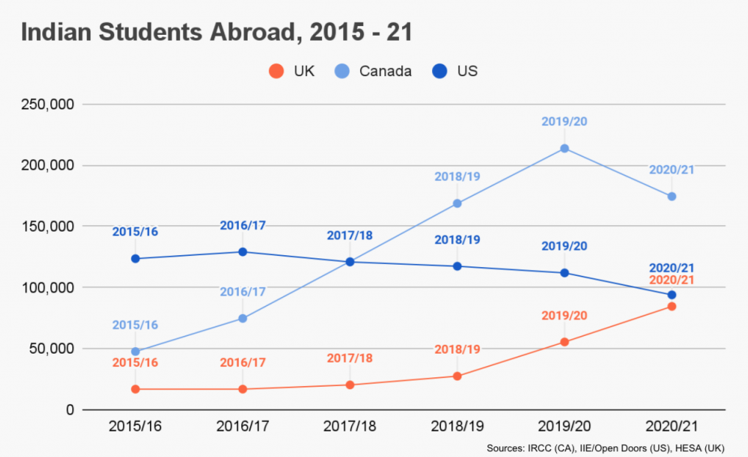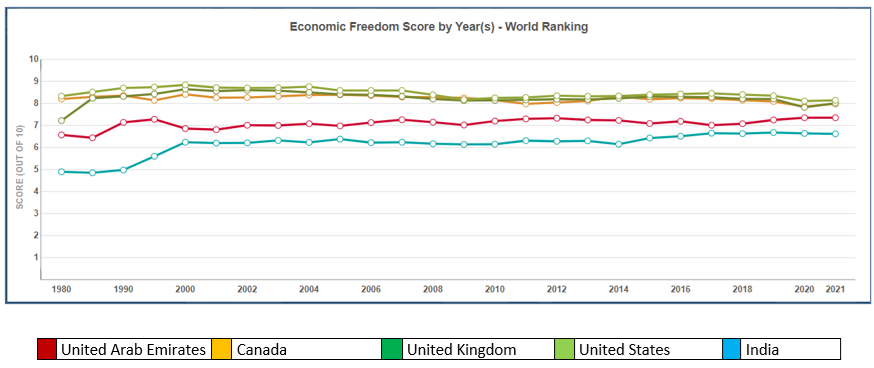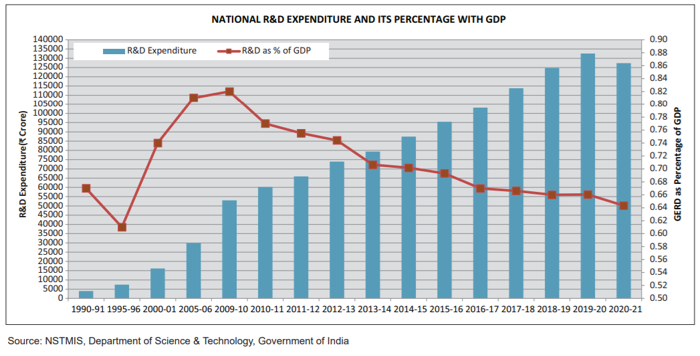
In an era marked by rapid globalisation and intense competition for talent, India faces a critical challenge — the phenomenon of brain drain. This term, eloquently encapsulated by Iravani (2011), refers to the exodus of the brightest minds and most skilled professionals from their homeland to foreign shores, lured by better opportunities and more conducive environments.
As India struggles to retain its intellectual capital against the magnetic pull of better prospects in developed nations, it is imperative to dissect and understand the multifaceted dimensions of this issue. This exploration will not only delve into the root causes and profound impacts of brain drain on India but also seek to unveil potential strategies and solutions to stem this tide of talent loss, ensuring the country’s robust growth and sustained global influence.
The Royal Society initially used the term brain drain to describe the post-war movement of scientists and technologists from Europe to North America. This phenomenon can occur when there is an overproduction of skilled individuals or a lack of local opportunities, leading to what Baldwin (1970) called ‘brain overflow’, where surplus talent is absorbed by foreign markets.
READ I Can manufacturing propel India to a $35 trillion economy?
Brain drain a big worry
In India, brain drain has become a significant concern due to the steady departure of talented individuals seeking better opportunities abroad. This outflow benefits host countries but brings numerous challenges for India, including talent loss and economic impacts, as highlighted by Naujoks (2009). This article examines the causes, effects, and potential remedies for brain drain in India, underpinned by relevant data and facts.
India, the world’s second most populous country, has a substantial number of emigrants. The annual migration of 2.5 million people, reported by the ministry of external affairs, threatens India’s growth by depleting its skilled human capital. In 2020, there were 2 crore Indians living overseas, with significant populations in the UAE, the US, and Saudi Arabia. Notably, between 2016 and 2020, 6 lakh Indians renounced their citizenship, as India does not allow dual citizenship.
Furthermore, the departure of approximately 23,000 Indian millionaires between 2014 and 2018, as reported by the World Bank (2018), and the migration of 2% of India’s high-net-worth individuals in 2020, underscore the gravity of the situation. The exodus of Indian CEOs leading global corporations and their significant contribution to global GDP, as noted by Anurag Roushan (2023), reflects the impact of this phenomenon.


Multiple factors contribute to brain drain in India. The country’s education system, seen as inferior to Western standards, drives many students abroad. According to the ministry of external affairs, over 1.3 million Indian students were studying overseas in 2022, with numbers expected to rise. Disparities in educational quality and capacity contribute to this trend. For instance, the limited availability of medical and engineering seats in India forces many students to seek education abroad. Additionally, the high cost of education in India compared to other countries adds to this exodus.
Unemployment and job market mismatches further fuel brain drain. With a rising unemployment rate (7.33% in 2022, per CMIE) and skill disparities, many young graduates look abroad for better opportunities. Data reveals that a significant portion of Indian professionals working abroad migrated for career advancement. The stark wage gaps across sectors and restrictive academic environments also play a role in this movement.
Negatives for India
Despite India’s potential as an investment destination, issues like high taxation, cumbersome regulations, and inadequate research infrastructure deter both domestic and foreign talent. India’s low expenditure on R&D and restrictive economic policies compared to other countries are noteworthy.
Addressing brain drain requires multifaceted efforts. Upgrading the education system, increasing R&D expenditure, fostering a culture of entrepreneurship, and reducing skill gaps are critical steps. Government initiatives, such as research parks and academic networks, aim to nurture talent domestically. However, more needs to be done to create employment opportunities and an attractive environment for skilled individuals.

Brain drain poses a complex challenge for India. While progress has been made in various sectors, retaining top talent remains a hurdle. Investing in education, R&D, and creating conducive conditions for innovation and entrepreneurship can help India retain its skilled workforce, benefiting the nation’s development and global standing.
Confronting the challenge of brain drain is akin to navigating a complex labyrinth, one that India must traverse with strategic acumen and foresight. There are various pathways that have led to the exodus of Indian talent, underpinning the urgent need for systemic reforms and innovative approaches. It is a journey that requires balancing the scales of educational excellence, economic allure, and a nurturing environment for innovation.
India must harness the latent potential within its borders, crafting policies and initiatives that not only anchor its gifted populace but also transform the nation into a global beacon of opportunity and advancement. In doing so, India will not only stem the flow of brain drain but also forge a new narrative of brain gain, cementing its stature as a powerhouse of intellectual and economic prowess on the world stage.

